In 1931, no one had climbed higher than Eric Shipton, a British coffee planter who cut his climbing teeth in Africa and made the first ascent of 7,756-meter (25,446 foot) Kamet in the Indian Himalaya with Frank Smythe, and bagged eight other peaks besides. Shipton introduced Tenzing Norgay to the climbing game, gave a young Ed Hillary his start in Himalayan mountaineering and is largely responsible for propagating the myth of the Yeti, or “abominable snowman.” But Eric Shipton’s most enduring contribution to alpinism is style.
Together with his frequent climbing partner Bill Tilman, he espoused a lightweight approach to mountaineering at a time when nationalistic sieges were the vogue. Though that aesthetic has come to represent the highest form of alpinism, in Shipton’s day it made him an outlier and likely cost him the opportunity to lead the 1953 British Everest Expedition. The honor fell instead to Maj. John Hunt, an army logistics officer who orchestrated a military-style assault on the world’s highest mountain. Shipton, who had participated in five exploratory expeditions to Everest, was nowhere near that mountain when his protégés Hillary and Norgay planted the Union Jack on its summit.
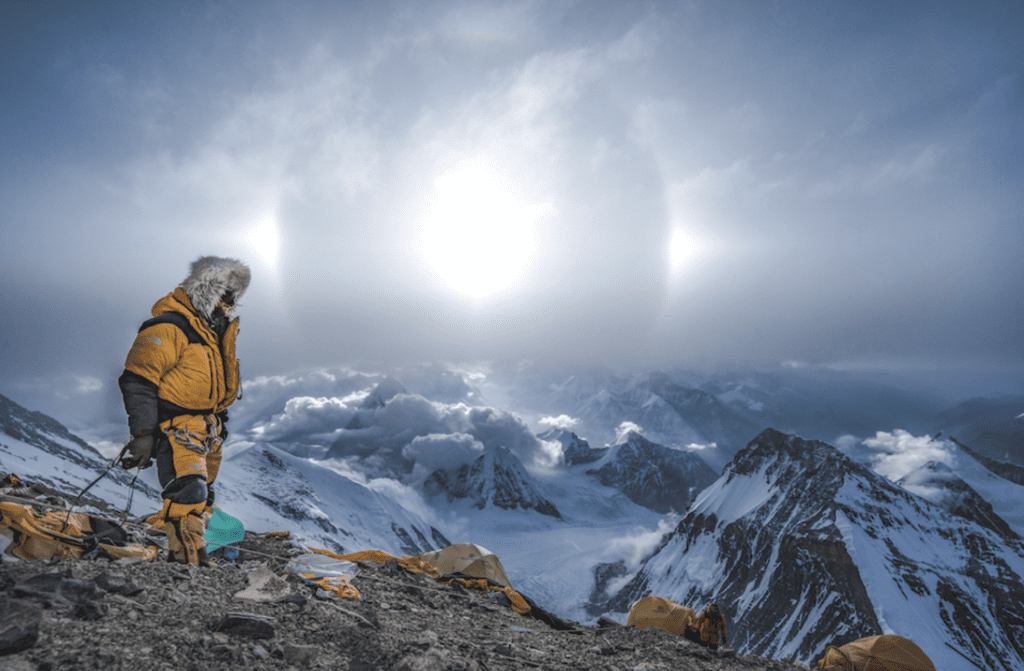
Shipton was born on a tea plantation in 1907 in Ceylon, now Sri Lanka. His father died when he was young, and the family returned to England where Shipton attended boarding school and took an interest in alpinism. As a teenager he climbed in Norway and several seasons in the Alps, culminating in a traverse of the Matterhorn in 1928, when he was 21 years old. Later that year he moved to Kenya to apprentice as a coffee planter.
In Africa he fell in with a crowd of keen climbers, including Percy Wyn-Harris, with whom he made the first ascent of Nelion (5,188 meters), the smaller of Mt. Kenya’s twin summits, before tagging its slightly taller sibling, Batian (5,199 meters). Shipton couldn’t stay away from Mt. Kenya, climbing the peak three times that year with different partners.
The following season, 1930, he attempted Mt. Kilimanjaro with a fellow planter and novice climber named Harold William “Bill” Tilman. The attempt was an abject failure, which Tilman later described with candor and good humor: “When a party fails to get to the top of a mountain, it is usual and convenient to have some picturesque excuse. The reason for our retreat was the more prosaic and not uncommon one – inability to go any further.”
Undeterred, Shipton led Tilman on the first ascent of Mt. Kenya’s knife-like West Ridge. Already honing the minimalist style of which both would become paragons, they carried no crampons and rather less rope than would have been prudent. They hadn’t planned to reach the summit, but once they’d cleared a technical rocky step they had no choice but to continue over the top.
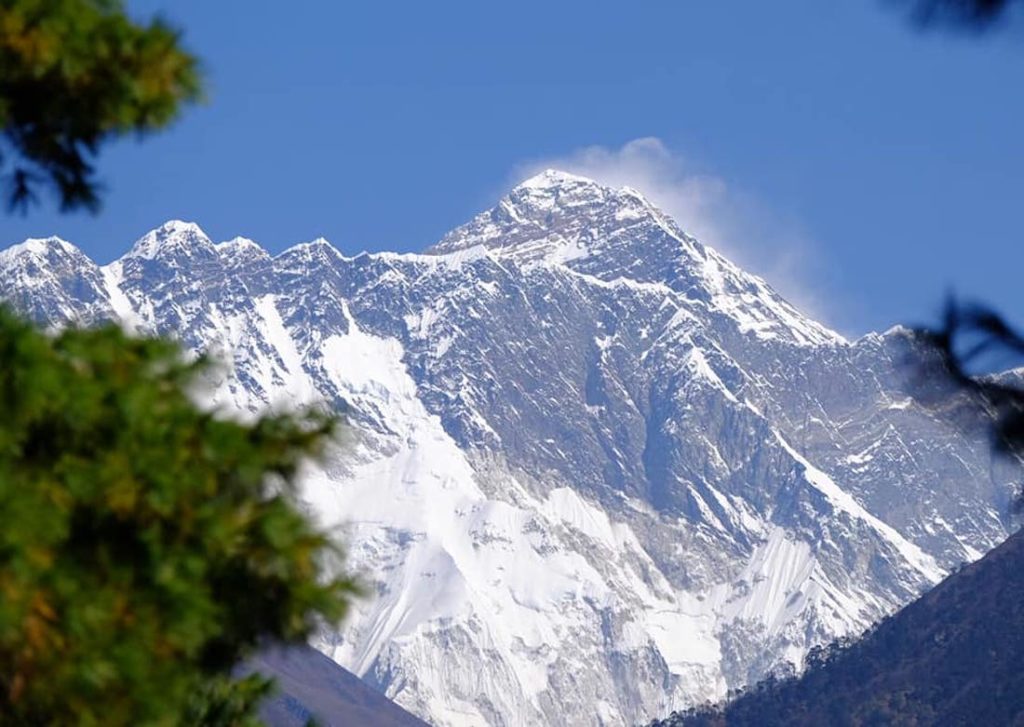
“After that I was infused with a pleasant sense of abandon,” Shipton wrote in his autobiography, That Untravelled World. “Our rope was not long enough for us to abseil down the red step, and the idea of climbing down it without support from above was not to be contemplated; therefore we just had to reach the summit.”
Shipton and Tilman made the first ascent of Mt. Kenya’s West Ridge in 1929. Wikimedia Commons
They topped out on Batian in mist and light snow, two hours before dark. Then, in Mark Horrell’s telling, “they crossed the Gate of the Mists, an eerie col between the two peaks, and climbed Nelion. . . . Tilman broke the pick of his ice axe driving it into the snow, and then dropped it altogether trying to arrest a fall. It skittered down the mountain and he had to complete the descent without it. Shipton was seized by food poisoning after eating a ‘meat essence’ on the summit of Batian, and had to keep stopping to throw up.”
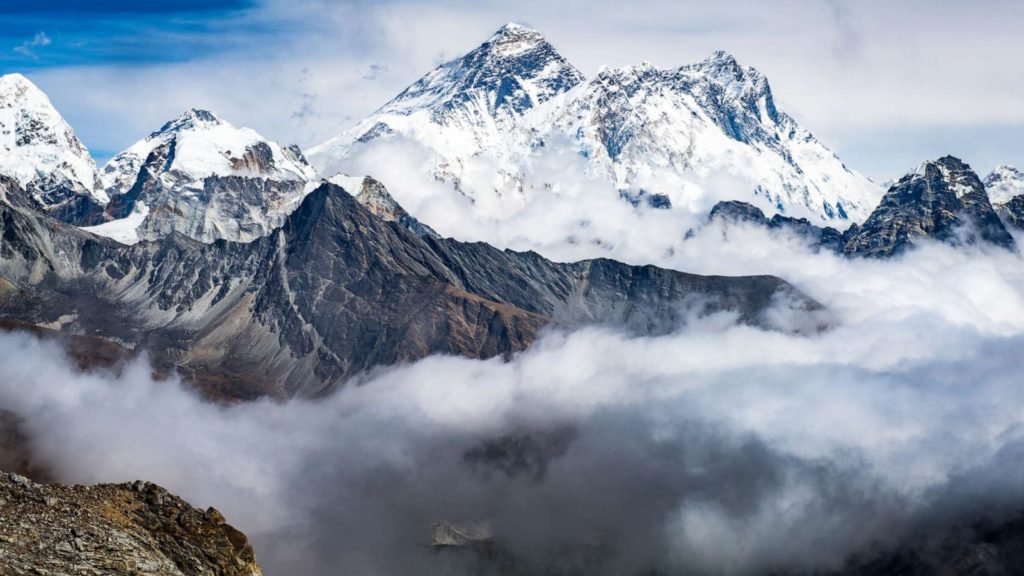
The duo arrived at their camp 28 hours later, having completed an epic traverse of Mt. Kenya. It was a remarkable achievement, particularly because Tilman was a climbing novice. “Shipton was the more experienced climber and did nearly all the leading,” Horrell writes. “But Tilman was fearless, and there was nowhere Shipton went that he wouldn’t follow.”
Soon enough the partners were exploring the Himalayas and honing their lightweight style, which Alpinist editor Katie Ives describes memorably in the forward to That Untravelled World: “Over time, their names became synonymous with a particular way of climbing and wandering: moving as lightly and as simply as possible through isolated ranges; planning minimalist expeditions ‘on the back of an envelope;’ and concentrating, not on the conquest of summits or the publicizing of achievements, but on finding a means—as Shipton called it—‘of identifying [oneself] with this enchanting world.’”
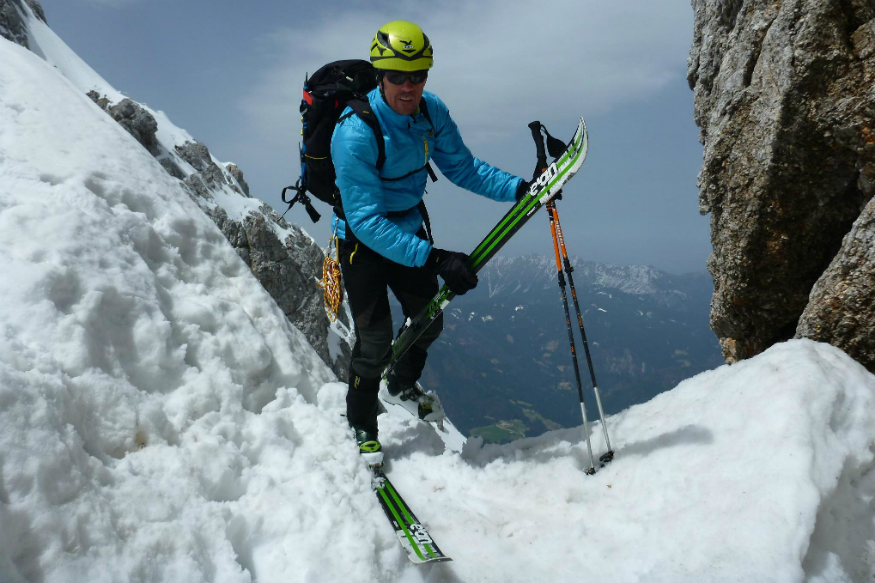
Shipton’s 1931 ascent of Kamet established him in the vanguard of British alpinists, and his 1934 expedition with Tilman to the Nanda Devi sanctuary via the Rishi Ganga Gorge electrified the British mountaineering establishment. Not only had they solved the difficult approach to Nanda Devi (Tilman would return to claim the 7,816-meter summit in 1936, eclipsing Shipton’s record for the highest mountain yet climbed) but the months-long expedition had cost just £287.
Though an accomplished climber, Shipton was at his best exploring new country. He’s remembered for scouting expeditions to big-name mountains such as K2 and Everest. His observations helped crack the riddle of both mountains, but his expedition notebooks are full of smaller ascents as well. After his Kamet triumph he hung around and climbed eight lesser peaks, and his 1935 Everest Reconnaissance Expedition bagged 20 peaks of greater than 20,000 feet.
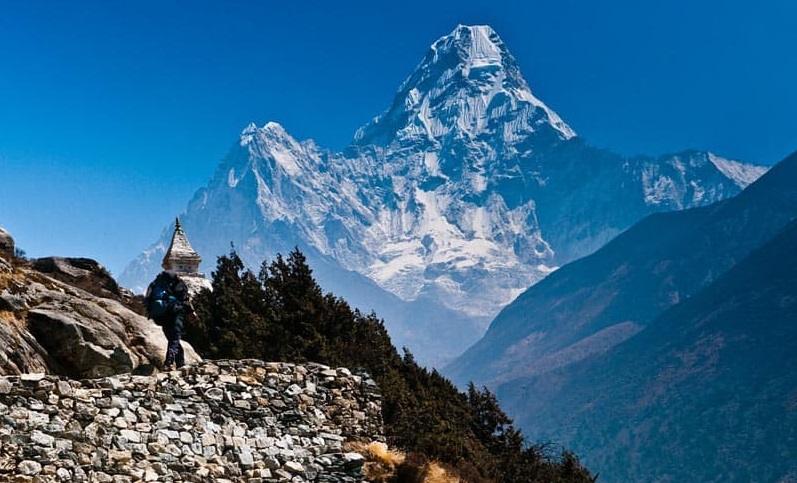
The most impactful decision Shipton made on that expedition, at least in terms of the history of Everest, came before the team left its base in Darjeeling. “From a hundred applicants, we chose fifteen Sherpas to accompany the expedition,” Shipton wrote in That Untravelled World. “Nearly all of them were old friends, including, of course, Angtarkay, Pasang and Kusang; but there was one Tibetan lad of nineteen, a newcomer, chosen largely because of his attractive grin. His name is Tensing Norkay.” Norgay, of course, would become the greatest climbing Sherpa of his generation, even before he set foot on the top of the world with Hillary.
Years later, another off-the-cuff decision set Ed Hillary on the trajectory that would eventually land him on the top of Everest. In 1951 Shipton led the critical reconnaissance of the mountain’s now-standard South Col route. (During this expedition Shipton photographed a large, vaguely hominid footprint that ignited a worldwide obsession with the so-called Abominable Snowman. American oilman Tom Slick got the fever so bad he funded several expeditions in search of the creature, one of which employed 500 porters and a pack of bloodhounds).
While preparing for that 1951 Everest exploration, Shipton received a curious telegram from the president of the New Zealand Alpine Club, saying that four of his countrymen were climbing in the Garhwal Himalaya and asking if two of them could join Shipton’s team. The club president didn’t even divulge their names.
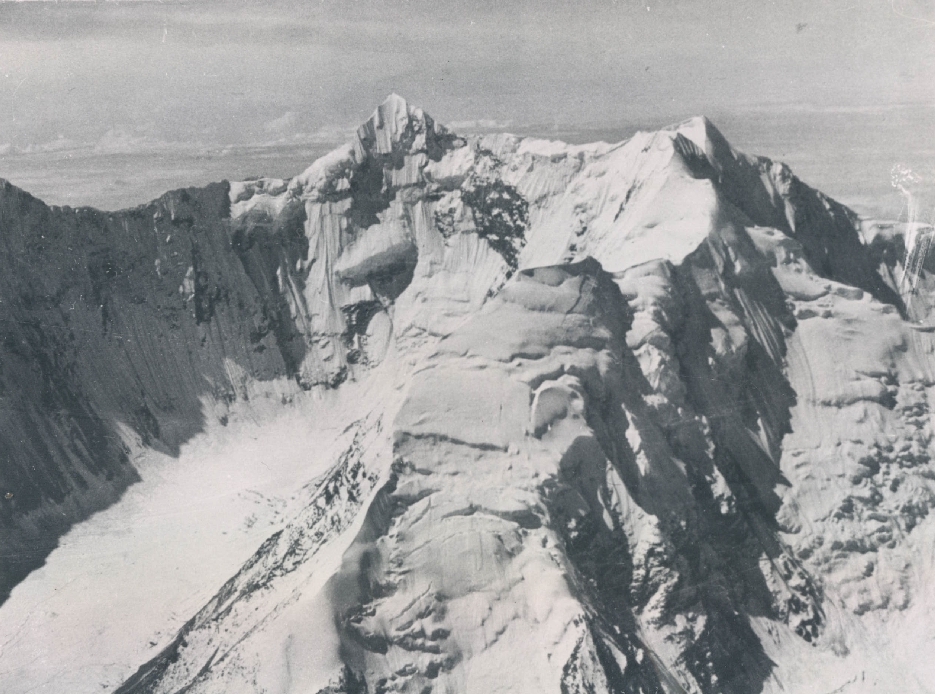
Shipton and Tilman were the first to enter the Nanda Devi Sanctuary, seen here in 1936. Wikimedia Commons.
“The correct answer was obvious,” Shipton wrote in his autobiography. “I had already turned down several applicants with very strong qualifications on the ground that I wanted to keep the party small; our slender resources of money and equipment were already stretched, and I had no idea where the two unknown climbers were or how to contact them. I was about to send a negative reply when, in a moment of nostalgic recollection, I recalled the cheerful countenance of Dan Bryant, and I changed my mind.”
Bryant, a New Zealander, was a member of the 1935 Everest reconnaissance. He’d suffered terribly from altitude sickness, but Shipley liked his attitude. Hillary was in, and the rest is history.
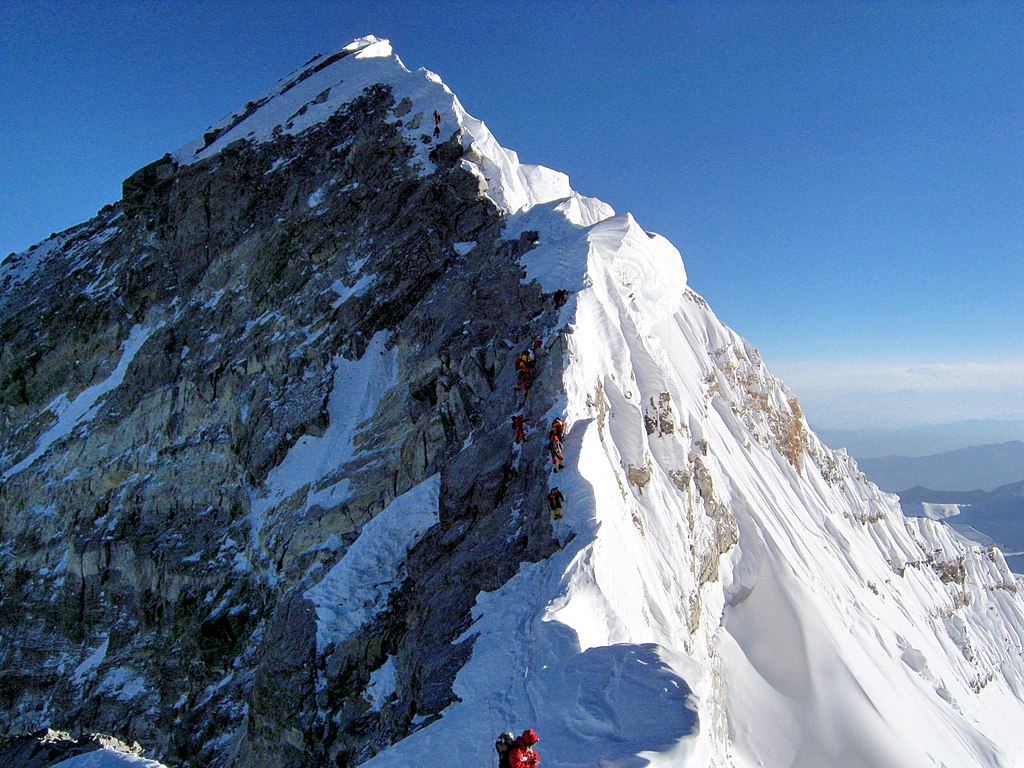
Shipton’s share of Everest history is lesser known, but hugely significant. His legacy of style is even more influential. He climbed throughout his life, in the Alps, Africa, the Himalayas and in Western China’s Kashgar region, where he served stints as British Consul during and after the war. Late in life he turned his focus to Patagonia, crossing the Southern and Northern Patagonia Icefields, traveling light and bagging peaks along the way, living, as always, by a simple creed.
“There are few treasures of more lasting worth than the experience of a way of life that is in itself wholly satisfying,” he wrote. “Such, after all, are the only possessions of which no fate, no cosmic catastrophe can deprive us; nothing can alter the fact if for one moment in eternity we have really lived.”
He fell ill in 1976 while visiting Bhutan, and was diagnosed with cancer. He died a few months later, in March 1977, aged 69.
Source: advanture-journal
You might also like :
- K2 Sherpa Train Hauls 145 People To The Summit In One Day
- The best hiking trails near Garmsich-Partenkirchen, Bavaria from Kreuzeck to Höllentalklamm Gorge
- When a ‘Belaytionship’ Comes to An End
- Travel news 08/2022 – Illegal Camping to be removed permanently in Manali
- The Nutso 1910 Attempt to Plant a Flag on Denali’s Summit In Winter
- The best hiking trails in Austria 2022
- Discover 7 Stunning Hikes in the Tenerife Mountains in 2022
- Hiking in La Trapa – The Dramatic Coastal Trail in Southwest Mallorca
- Travel News 07/2022 – UK and New Zealand govt advises citizens against non-essential travel to Sri Lanka
- The best hikes from Biniaraix to Cornador Gran Peak, Tramuntana Mountains, Mallorca
- Discover the best Hiking in Northern Mallorca : Talaia d’Alcúdia and Platja des Coll Baix
- The best coastal hiking in Portugal you should to try


1 comment
Thanks for sharing. I read many of your blog posts, cool, your blog is very good.